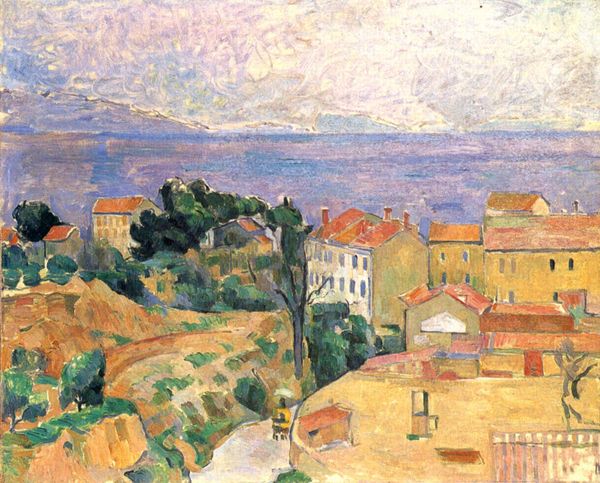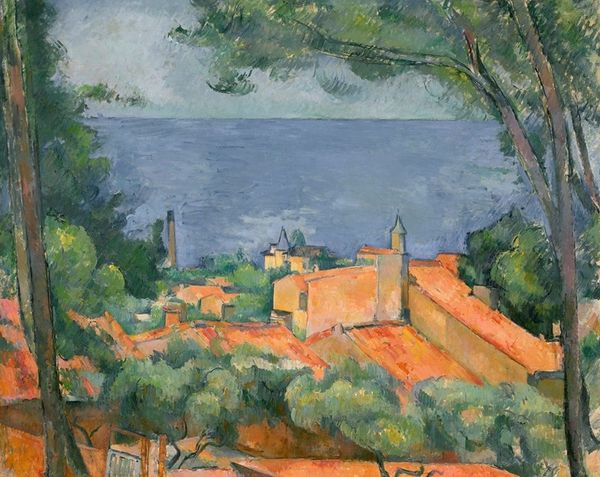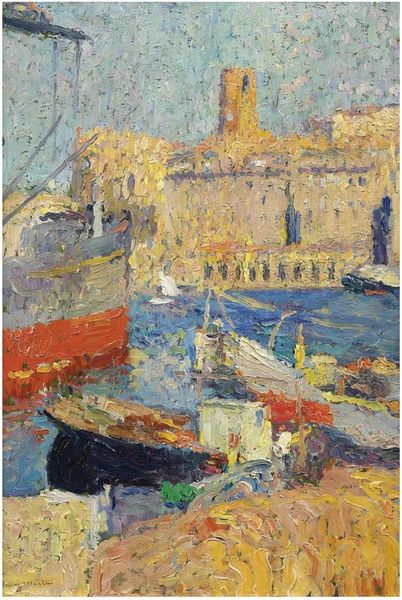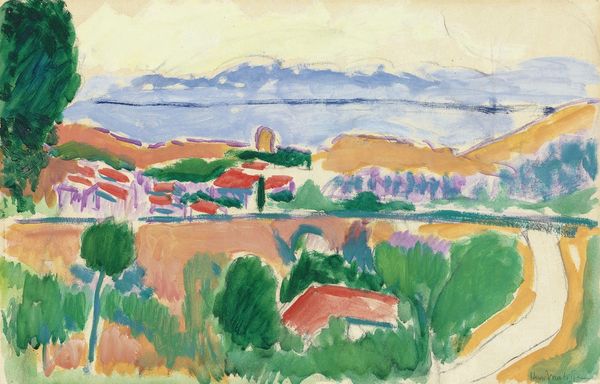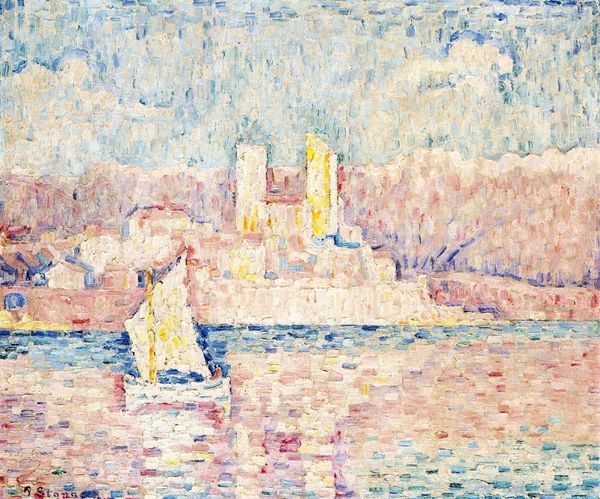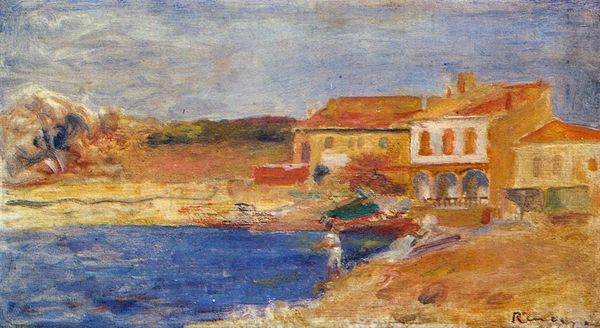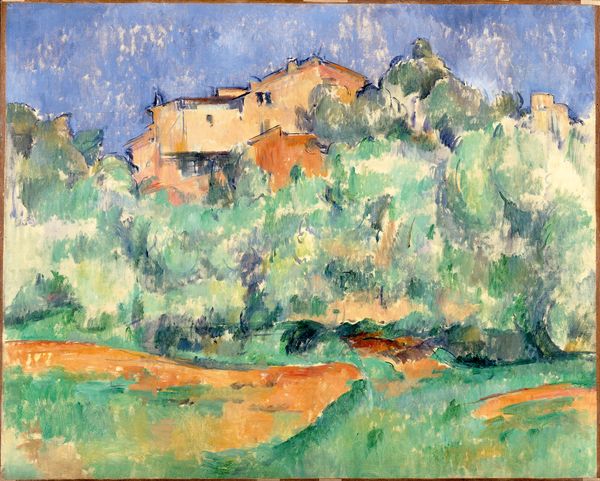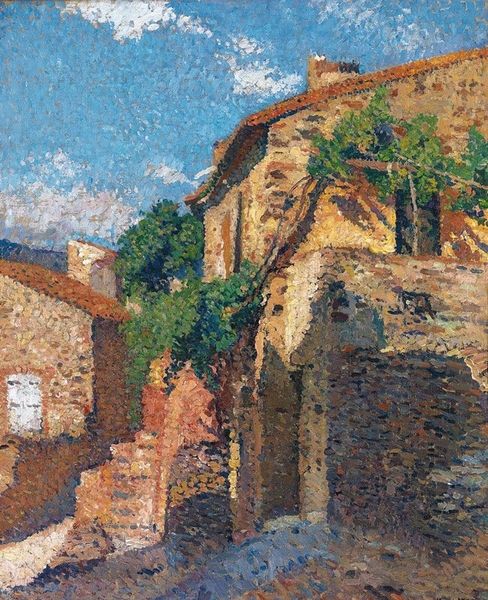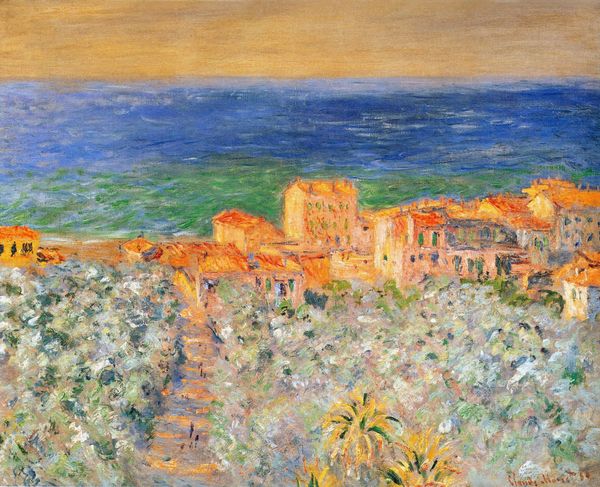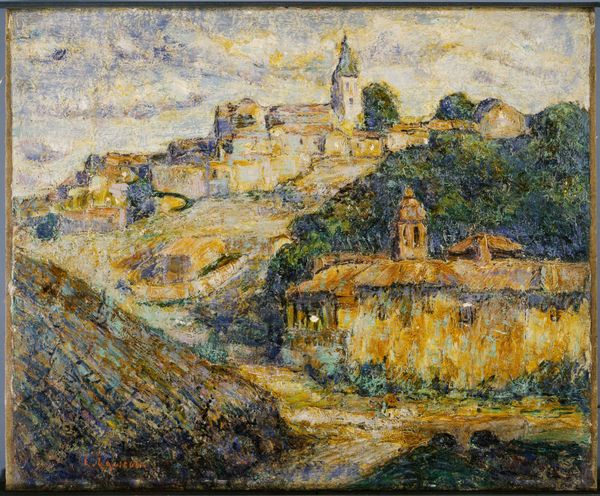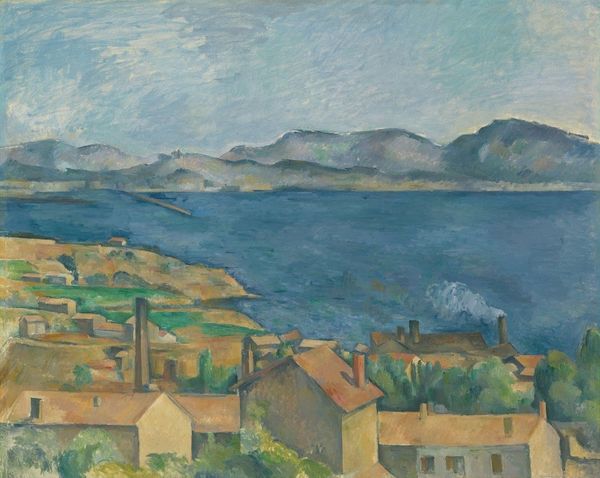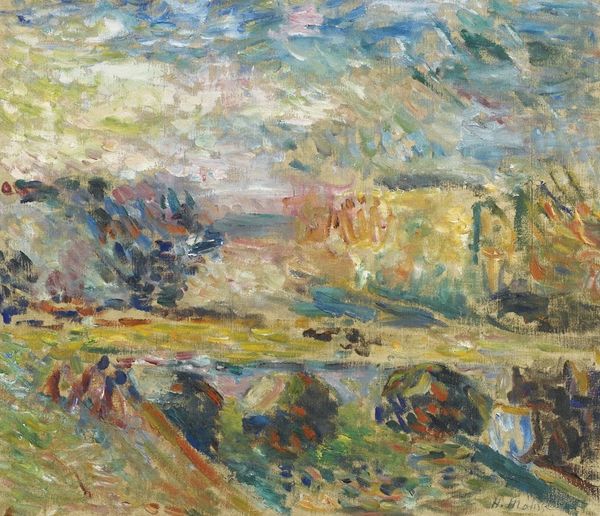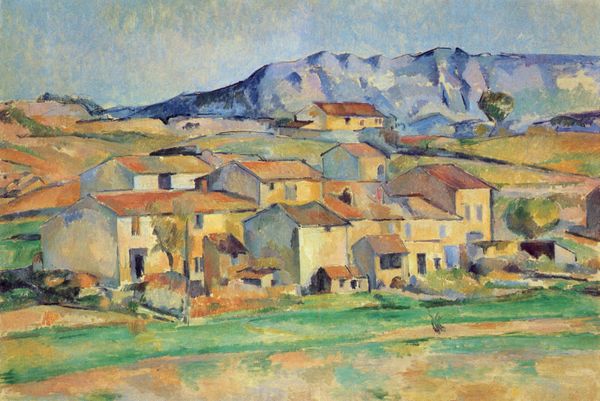
painting, oil-paint, impasto
#
fauvism
#
painting
#
oil-paint
#
landscape
#
impressionist landscape
#
impasto
#
cityscape
Copyright: Public domain US
Curator: Henri Matisse painted this work, titled "View of Collioure (The Tower)", in 1905. It is a painting rendered in oil on canvas, exemplifying the Fauvist movement. Editor: It strikes me as a celebration of light and color; the application is so free. The textures almost vibrate off the surface, don't they? Curator: Indeed. Collioure was a small coastal town in France that attracted many artists seeking its unique light. Matisse used expressive, non-naturalistic colors and bold brushstrokes. He was part of a group that critics derisively labeled "fauves" or "wild beasts." These artists radically departed from Impressionism. They used intensely saturated colors to express emotions, defying representational accuracy. What social implications do you discern from this approach? Editor: In this rejection of realism, I find an embrace of individual freedom. Considering the period, where rigid social norms and hierarchies were increasingly challenged, the wild abandon of color reads like an assertion of personal autonomy. How else might we interpret that steeple reaching towards the sky? Is this simply a cityscape, or something more subversive, when examined from the viewpoint of artistic liberties being claimed at the time? Curator: Absolutely, the church tower could be a symbol of societal structures that the Fauves were implicitly rebelling against. There is a very pronounced challenge to academic painting traditions as part of this revolt too. Consider how societal expectations confined artistic expression before movements like this arose; now consider the explosion of self expression found within its art. Editor: Looking closely at the impasto, I also note how materiality becomes important, lending weight and physicality. How do you see this emphasis contributing? Is it possible to read in that sense some political agency of the artwork beyond a pictorial function? Curator: By drawing attention to the artwork’s very making, it also undermines illusionism and points toward artistic intent. That’s interesting if we also examine its interplay with structures of institutional critique or challenge; museums being inherently elitist spaces are thereby re-negotiated into potential canvases that reflect shared human values that seek inclusion regardless gender identities and so on. It opens dialogues in ways accessible now that weren't accessible a century ago. Editor: Ultimately, Matisse’s landscape offers not just a glimpse into the French coast, but an invitation for questioning everything art’s function represents as both beauty AND social practice – a lasting question even today. Curator: Well, in reflecting on these pieces from social and historical lenses, they resonate differently—inviting ongoing discussions on representation.
Comments
No comments
Be the first to comment and join the conversation on the ultimate creative platform.
